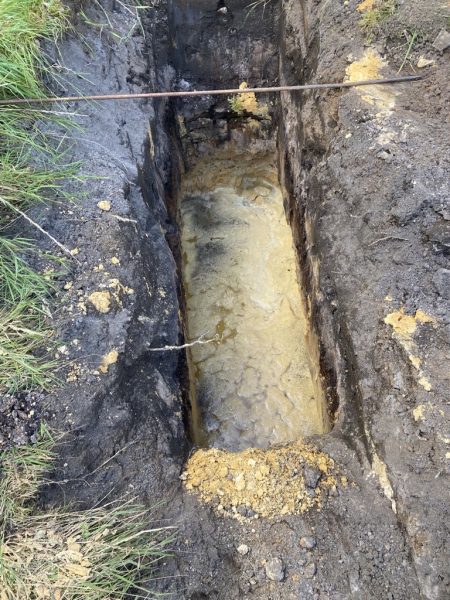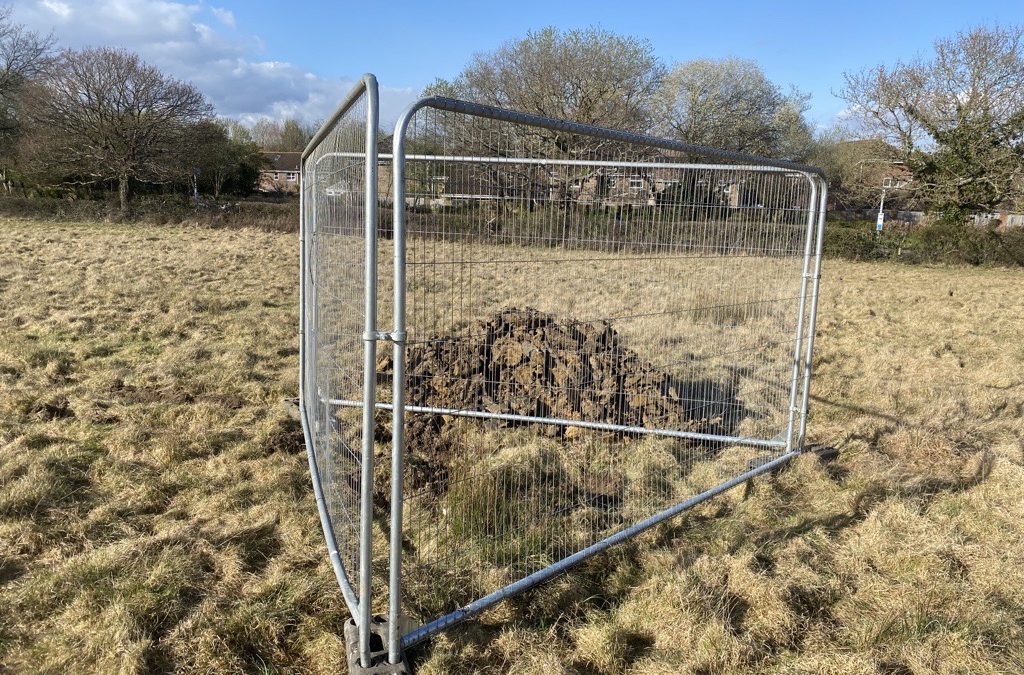Winter Groundwater Monitoring – What, How, and Why?
Geoenvironmental • Geotechnical • Regulation
As winter turns into spring, it is time to reflect on what has been a rather busy six to seven-month period undertaking a significant number of projects that have required Winter Groundwater Monitoring (GWM) and associated BRE365 Infiltration Testing in and around West Sussex. Below, our Senior Engineer Roger “The West Sussex Guru” Foord tells you what it’s all about.
Why undertake Winter Groundwater Monitoring?
When considering the SuDS for your development, the design must include adequate Winter groundwater monitoring to determine the highest winter groundwater table. Groundwater elevations in West Sussex generally tend to peak around February to March. Due to the potentially devastating impact of groundwater flooding events, Local Planning Authorities (LPAs) frequently request monitoring of winter groundwater levels as part of planning permission. For example, Arun District Council in West Sussex requires that any residential developments with five or more properties have groundwater monitoring carried out between October and March inclusive.
Winter Groundwater Monitoring is undertaken in standpipes installed within boreholes typically drilled to a depth of 5m below ground level using our Windowless Sampler Drilling Rig (He is called Rig Astley as regular readers of the Ground and Water Blog will no doubt be aware). The standpipe usually has a metal cover fitted flush with the existing ground surface for unobtrusive monitoring over the six-month period to be undertaken. In some situations, fields or ongoing construction sites, for example, the location would be lost by vegetation growth or destroyed/buried so a raised cover is used to hopefully protect the location. Monitoring of the groundwater levels will then be taken at fortnightly or monthly intervals throughout the target period.
The monitoring can be undertaken manually using a technician and their trusty dip meter. However, on some sensitive sites or on sites close to the sea or a tidal estuary where more frequent readings are required, continuous winter groundwater monitoring may prove to be more beneficial. The data is highly accurate (recording to ± 0.3cm) and provides a robust and detailed data set by recording the groundwater levels every hour. This means all fluctuations are captured that spot monitoring could miss, providing a more robust dataset.
The groundwater level data can be easily compared to rainfall data to observe patterns and recharge rates following periods of heavy rainfall, or the data can show that groundwater on a site is influenced by another factor if a correlation between rainfall isn’t seen; tidal fluctuations for example where the relationship between groundwater levels and tidal fluctuations can be closely monitored. Continuous winter groundwater monitoring can provide cost savings by capturing the ‘worst-case’ conditions early in a project lifespan, avoiding the need for the drainage system to be redesigned or found not to be suitable.

What is the BRE365 infiltration test?
BRE365 infiltration testing is usually required to be undertaken in association with the winter groundwater monitoring when the groundwater levels are anticipated to be at their highest (usually February and March) to test the ground in its hypothetically worst-case conditions. BRE365 states that soakaways should empty from full to half volume within 24 hours.
To carry out the test you need to excavate a trial pit or number of pits (depending on the size of the development) to an adequate depth beneath the estimated invert level of the inlet pipe. This is to ensure that the soil being tested is representative of what will actually be constructed. The pit must be excavated below any Made Ground and if underlying cohesive soils of likely low permeability are encountered, these should also be bypassed for more granular soils or chalk (if appropriate). This is not always possible, so get ready for a long wait.
The height of the water below ground level must be recorded at regular intervals in order for the calculation of the infiltration rate of the soil to be made.
We are frequently told that there is a water supply on-site, so you don’t need to allow for that is the fee proposal. However, the use of a hose connected to a domestic water supply directly into the pit is not acceptable as water may infiltrate prior to the pit being full rendering inaccurate results. The trial pit needs to be filled with water from a bowser or water tanker to ensure it is filled as rapidly as possible.
Why is winter groundwater monitoring and associated BRE infiltration testing important?
Local Planning Authorities (LPA) and Lead Local Flooding Authorities (LLFA) request SuDS reports at the planning application stage, to ensure that development proposals have considered the surface water runoff arising from a development and have feasible proposals in place before commencing a development. The main reason for this is that SuDS require space, and all infiltration devices must be located a minimum of 5 metres away from a habitable building.
Of course, most developers want to make the most of the available space on a development so there may not be any space for a soakaway. Therefore, should the BRE365 percolation pass and there not be available space for a soakaway, the planning authority may ask the client to change the site layout in order to provide space to allow infiltration.
Therefore, typically for major developments where a desktop geological study shows underlying geology with potential for infiltration, the LPA and LLFA will request that a BRE365 infiltration test is carried out on the site to show that the SuDS hierarchy has been followed, and also should the test fail, this allows us to investigate further methods of restricted surface water disposal in order to ensure that SuDS can be included in the development and that there is somewhere for any restricted surface water discharge to be conveyed.
Carrying out a Percolation Test demonstrates to your Local Planning Authority you have conducted the necessary steps to find out this information as part of your planning application.
Plan ahead and this year contact Ground and Water for all your GWM and BRE365 needs….and don’t leave it until March next time!!
